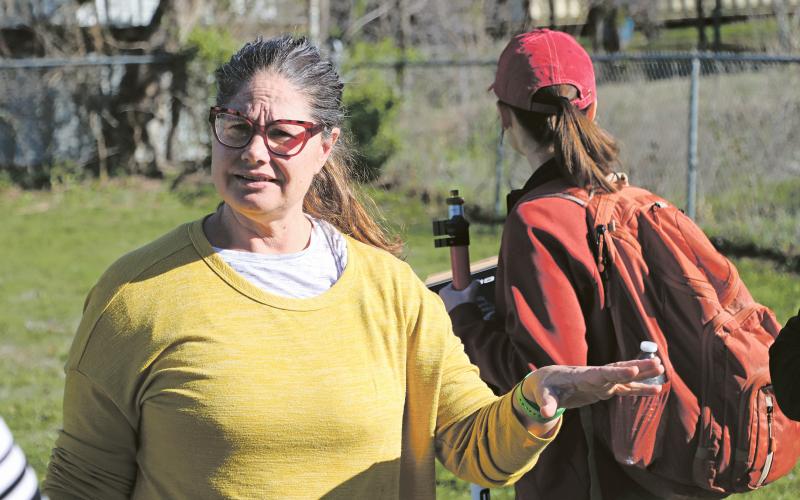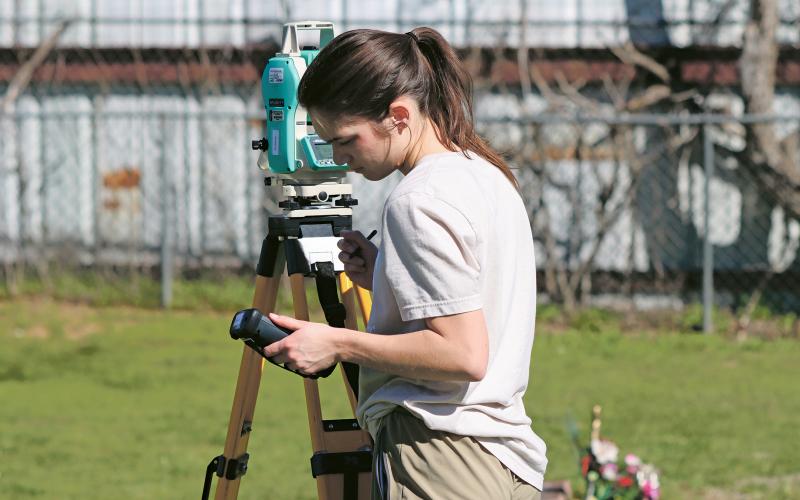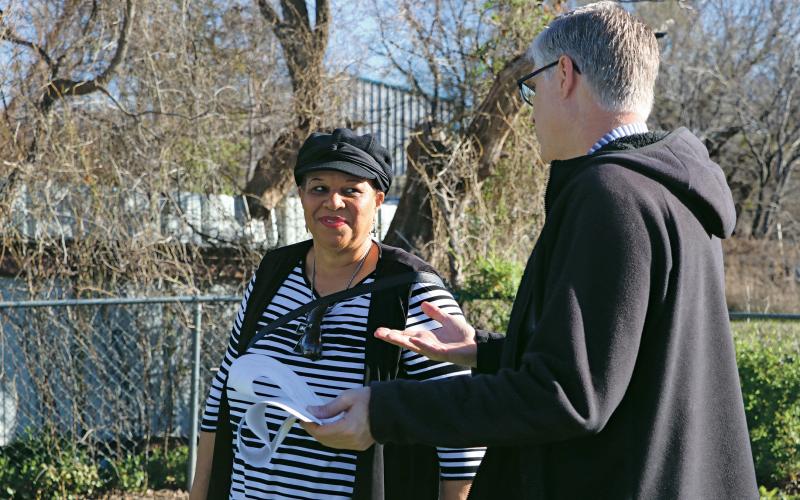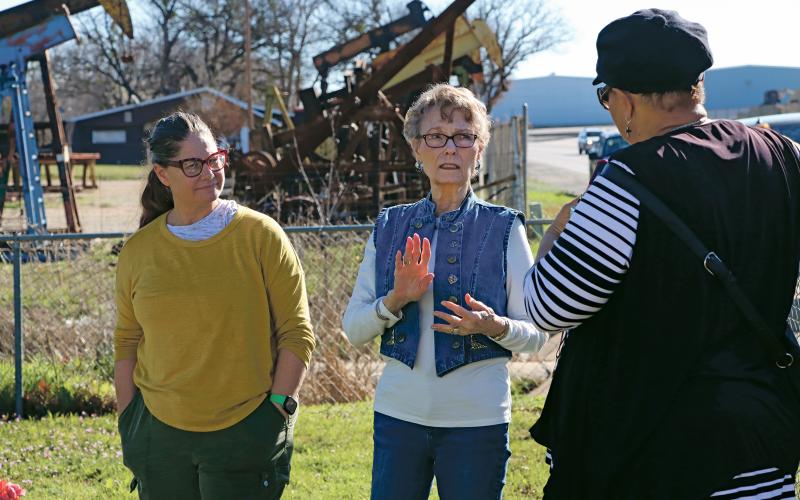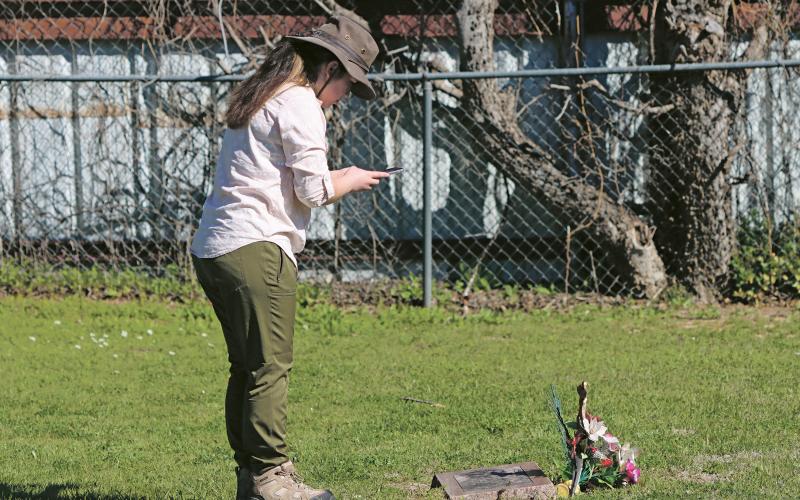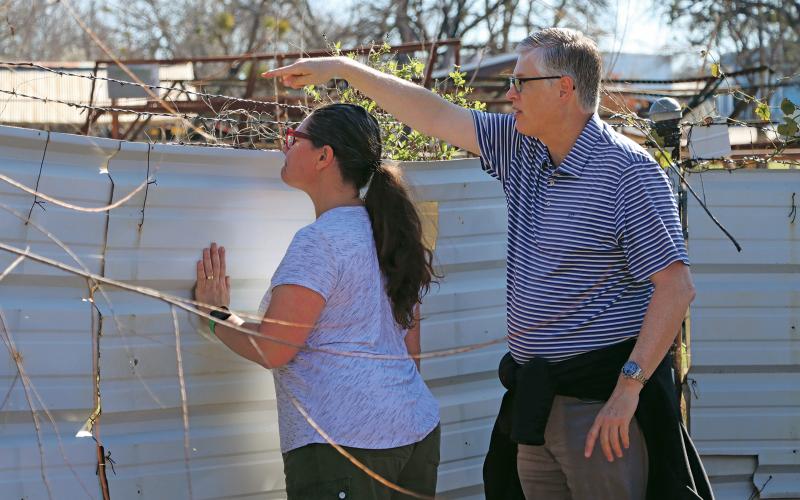Digging up the past: Texas Tech researchers begin study of local African American cemetery
Work to unearth the history of the Oak Grove Colored-William P. Johnston Memorial Cemetery continued last weekend with the beginning of an archaeological study by a professor and her students from Texas Tech University.
Dr. Tamra L. Walter, historical archaeologist and associate professor of archeology, along with graduate students Abby Sink, Mara De Gregori and Alexia Calderon, and consultant Robyn Bieber, spent Saturday, March 2 in Graham getting a feel for the area.
The first day of work consisted of preliminary mapping of the area they will be studying in the future. Due to lack of attention over the years, the cemetery property on the north and west sides has been encroached upon.
Walters said they will focus their research on the properties outside of the current fence line, as well.
“Knowing now that the boundaries of the cemetery, this fence line doesn’t reflect that (boundary). I find it hard to believe that we have 40 (graves) in here, in this small spot,” she said. “The only way for us to (find out) is through ground penetrating radar, or scraping.”
Scraping, which Walters explains as a process which involves taking off a layer of topsoil to inspect the ground for potential graveshafts, is the next major project the group will complete.
“For example, we could go over one of these graves that we already know are here that are marked, and we just take a little section, and we scrape off a little bit of the top just so we can see what it looks like where the shaft was dug. There's usually a difference, which can be very faint, right between the ground that was not dug into and the grave shaft itself,” Walters explained. “We're not removing anything right other than dirt. We put it back when we're done. But that gives us a sense of whether or not we have any kind of evidence for graves there.”
The students and professor will return at least two more weekends to complete the scraping. While they will not have access to the ground-penetrating radar until the fall, the current group has a lot of important work they plan to complete this spring.
“This is a semester course, so we will not be able to finish it this semester. But we'll continue working here until we get it done.” she said. “At this stage, we'll do a history. We're going to do a deep dive on the death certificates. We know some of the people who were buried here – we'd like to expand out to see if we can find names of other folks. They'll be writing up biographies of those, so we'll provide that as much as we can. There will be a history of Graham, a history of the cemetery – African American history here, too. We can gather that in this first initial phase of work.”
The group will also create an interactive “story map” which will be accessible to the public to learn more about the history of the cemetery and the people buried there.
“We'd like to create a story map, which is a digital map where you can look, but where you can point to different graves on the landscape here on our map and you can click on it, and it'll come up and it'll show you a person's name,” Walters said. “You want to make this available to people, and that's important. I think that is our ultimate goal here.”
The descendant who first shined a spotlight on the cemetery and is still searching for her sister’s grave is Rev. Vanessa Sims. She has been working with multiple entities to push for answers for not only herself, but also other descendants.
“We can’t be responsible for what people did in the past, we can only be responsible for what we do moving forward,” Sims said in a previous interview. “Going forward you don’t have to be collective... just us pulling together... to give the people that are buried (in the cemetery)... a standard of dignity that other people deserve. I continue to research and try to advocate (and) be a voice for the deceased and eventually, hopefully, find my sister’s grave and honor her.”
Another phase of the study includes gathering oral histories. Once the researchers receive approval from the university’s Institutional Review Board, they are still faced with the difficult task of finding the people who lived through the history the group is trying to uncover.
“I don't know how many people are still in Graham. Like Vanessa, how many people have families here that are still here that haven't moved?...,” Walter said. “If we can find descendants for the people that are buried here and do interviews with people, it'd be good. But that is a much harder thing. It takes a little more time.”
According to Walters, it is important for them to learn as much as they can about the history – not only for the record, but for the descendant community.
“The big thing here is that … African American cemeteries are vanishing at an astonishing rate. Just documenting them is important,” Walters said. “Having some of this technology that we're using now really helps – the 3D modeling, for example, of the headstones, because these won't last. You don't have a perpetual care, you don't have somebody coming out to take care of these places, they will deteriorate even further. So, that's our big concern is to document everything that we can while we're here, and to maybe recover the history for the descendant community. So learning about that is really important.”



